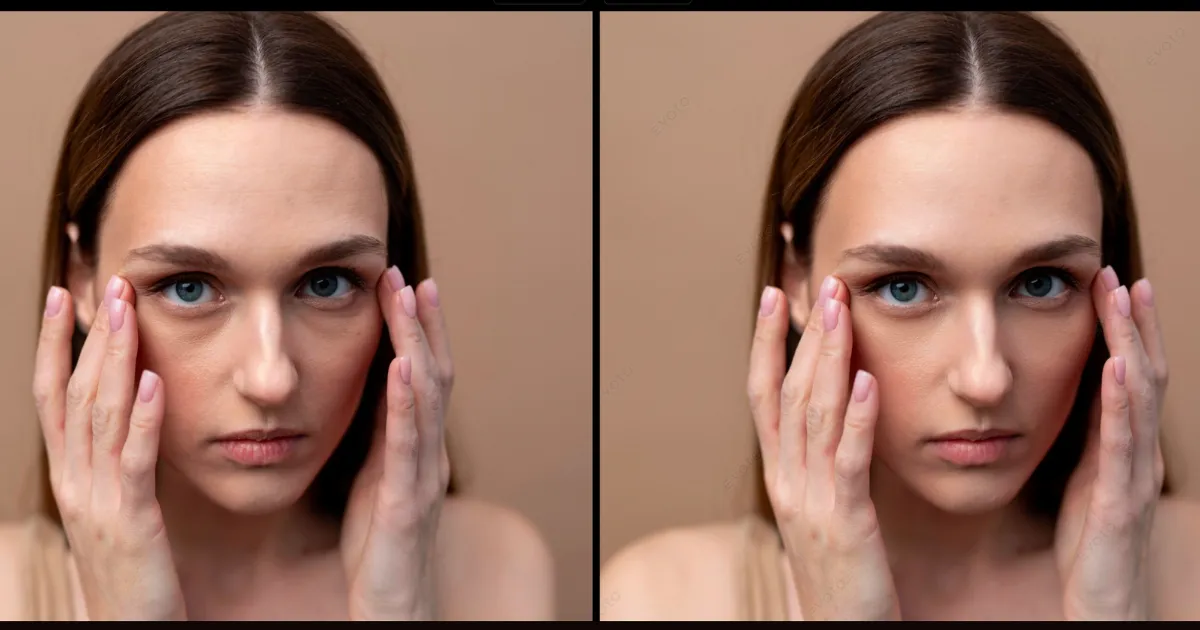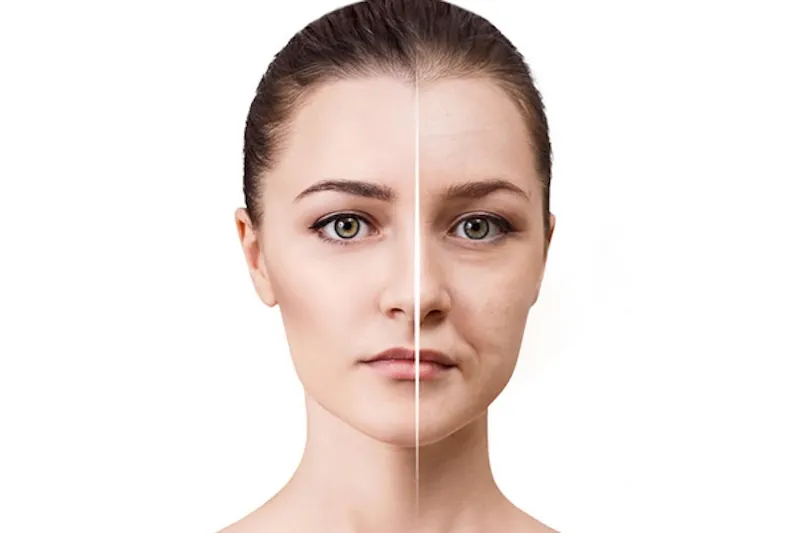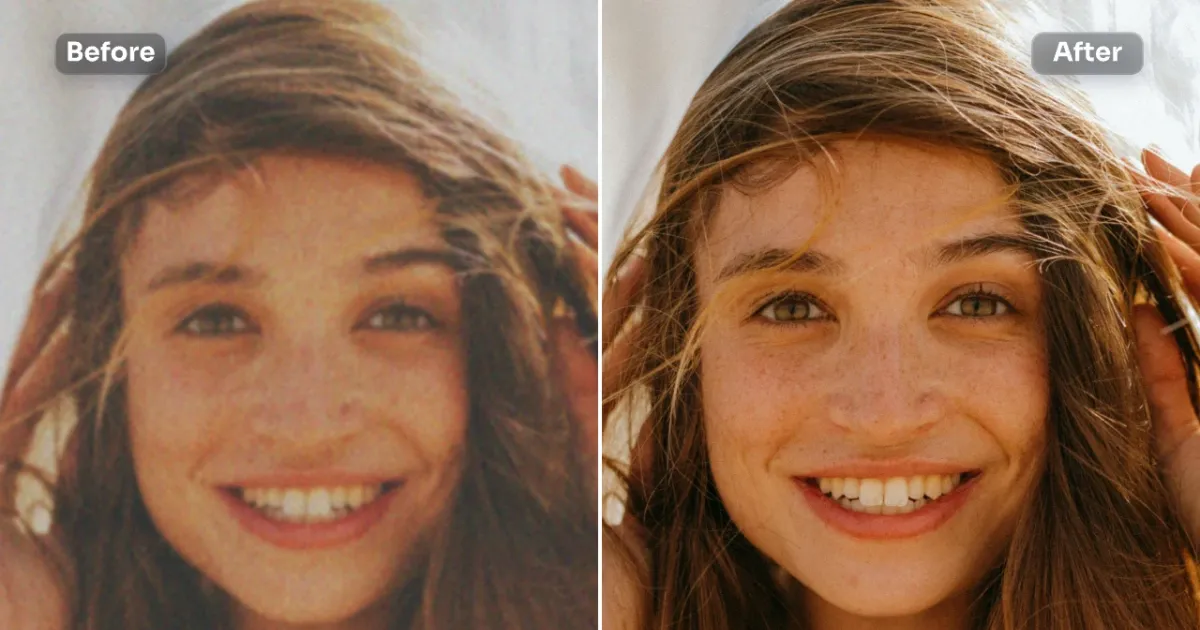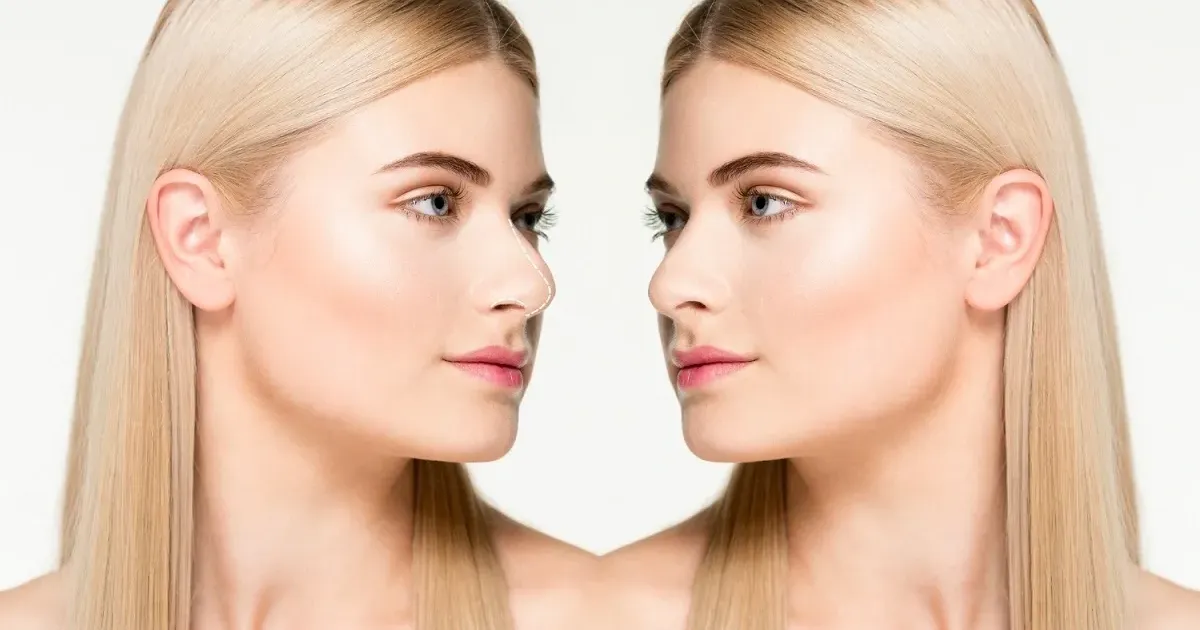Looking for a faster way to retouch skin while keeping it natural? Traditional photo editing methods, like manual brushing or clone stamping, have long been trusted for detailed touch-ups. But modern blemish remover tools are changing the game.
Powered by smart technology, they offer precise control and instant results, helping you clean up spots, acne, or marks while maintaining realistic skin texture. With easy sliders and one-click fixes, blemish removers are ideal for anyone who wants high-quality edits without a steep learning curve.
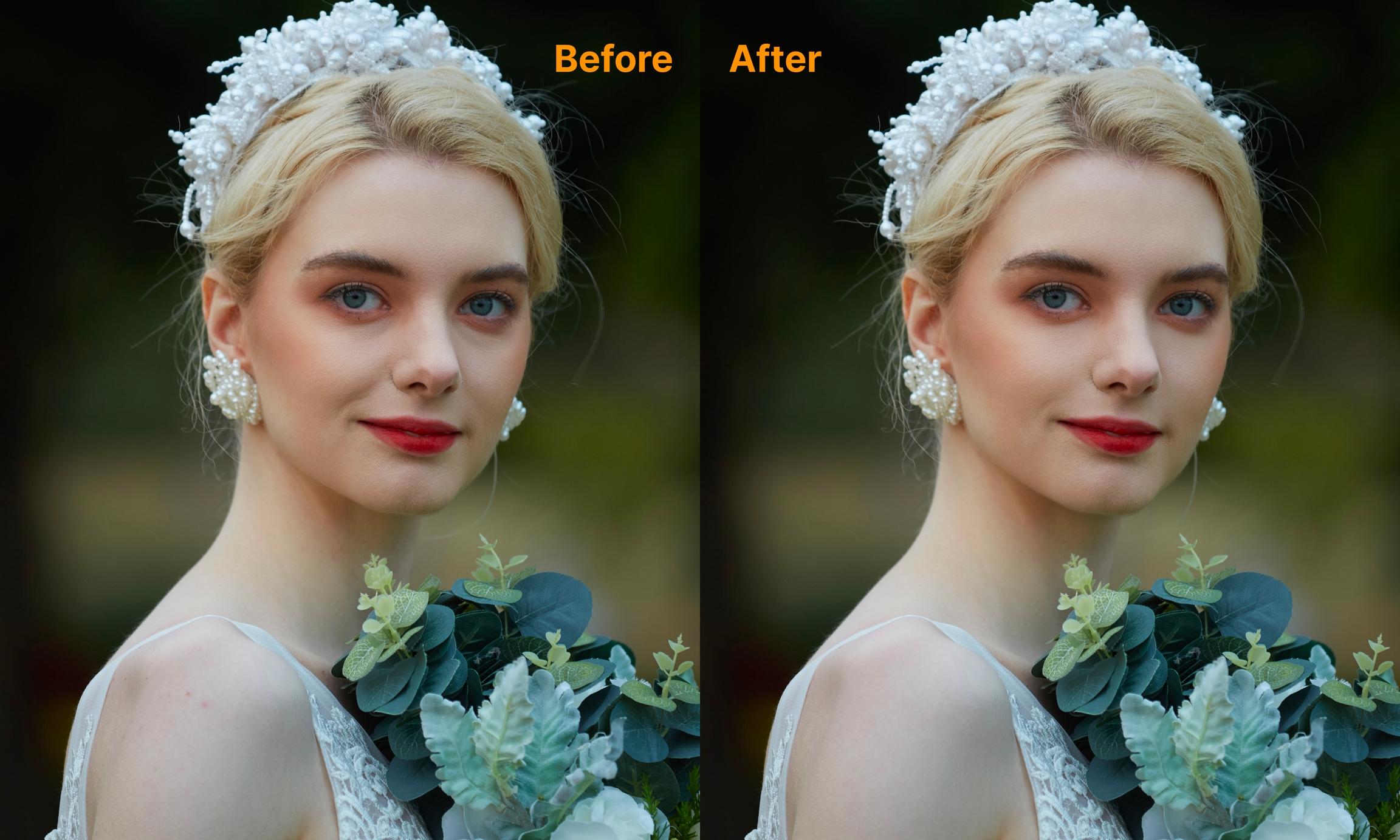
Blemish Remover vs Old Retouching
Spot Removal
Blemish remover tools like Evoto are changing the way people retouch skin in photos. Powered by smart AI, they can automatically detect and fix acne, freckles, moles, and even wrinkles in just a few clicks—saving time without sacrificing natural results. Evoto stands out by offering separate sliders for freckles and acne, one-click mole removal, and a manual pen for precise edits.
In comparison, traditional methods like the Healing Brush or Clone Stamp in Photoshop offer full control for detailed work but often require more time, skill, and zoomed-in effort. Today, many photographers use a mix of both—starting with AI-based blemish removers for fast cleanups, then fine-tuning with traditional tools when needed.
Tip: For fast and natural spot removal, start with a blemish remover like Evoto. Use manual tools only for special details.
Skin Tone
Getting an even skin tone is important in portrait editing. Modern blemish removers analyze the skin and adjust tones automatically. Evoto, for example, can reduce redness, dark circles, and shine while keeping the skin’s natural color and texture. The tool recognizes oily areas and fixes them without making the skin look flat or fake. Users can also adjust the strength of each effect, so the results match their style.

Traditional retouching methods require more steps. Editors often use layers, masks, and brushes to fix uneven skin tone. They might use Frequency Separation to separate texture from color, then paint over problem areas. This method gives a lot of control, but it can be hard to learn and takes much longer.
Modern blemish removers make it easier for anyone to get smooth, even skin. The tools work quickly and do not need much training. They also help keep the skin looking real, not overly edited.
| Feature | Modern Blemish Remover (Evoto) | Traditional Retouching |
|---|---|---|
| Skin Tone Adjustment | Automatic, adjustable sliders | Manual, layer-based |
| Redness/Dark Circle Fix | One-click or slider | Brush and mask required |
| Learning Curve | Easy | Advanced |
Natural Look
A natural look is the goal for most portrait edits. Modern blemish removers use AI to study the skin and fix problems without making the face look plastic or blurry. Evoto’s technology regenerates skin texture, so the final photo keeps pores and fine lines. The manual tuning pen lets users brush on or erase effects, giving full control over the final look.
Traditional retouching can also create natural results, but it depends on the editor’s skill. If someone uses too much blur or clone stamping, the skin can look fake. It takes practice to keep the texture and avoid over-editing.
Modern tools like Evoto help users avoid these mistakes. The software blends changes into the skin, so edits are hard to spot. Even beginners can get professional-looking results. For those who want more control, the manual options in Evoto allow for detailed adjustments.
Note: Keeping some natural features, like freckles or small lines, helps portraits look real and lively.
Why Evoto Leads in Modern Editing
Evoto’s blemish remover module offers a complete set of features for both beginners and professionals. Users can remove spots, adjust skin tone, and keep a natural look with just a few steps. The software includes:
- Manual tuning pen for precise edits
- Separate sliders for freckles and acne
- One-click mole removal with easy restoration
- Specialized tools for body blemishes, infant skin, and glass glare
- Wrinkle and dark circle reduction that preserves natural features

These features make Evoto a top choice for anyone who wants fast, high-quality edits without losing the real look of the skin. The tool works well for single photos or large batches, saving time and effort.
Summary Table: Modern vs. Traditional Retouching
| Aspect | Modern Blemish Remover (Evoto) | Traditional Retouching |
|---|---|---|
| Spot Removal | Fast, automatic, adjustable | Manual, slow, detailed |
| Skin Tone | Smart, easy, natural | Complex, skill-based |
| Natural Look | AI-powered, texture preserved | Depends on editor’s skill |
| User Control | Manual tuning available | Full pixel-level control |
| Efficiency | High, batch processing | Low, one-by-one editing |
Modern blemish removers like Evoto help users get the best of both worlds: speed and natural results. Traditional methods still have value for special cases, but most people find modern tools easier and faster.
Ease of Use
User Experience
Modern editing tools focus on making the process easy for everyone. Many users find that a blemish remover offers a smooth and friendly experience. Evoto, for example, gives users clear sliders and one-click options. These features help people fix skin issues quickly. The manual tuning pen lets users brush over areas for more control. Users can see changes in real time, which helps them decide what looks best.
Traditional retouching tools often require more steps. Editors need to select the right brush, zoom in, and carefully paint over each spot. This process can feel slow and sometimes confusing, especially for beginners. Mistakes may happen, and fixing them takes extra time. Professionals may enjoy the control, but most people want a faster way.
Tip: For those who want quick results, modern tools like Evoto save time and reduce stress.
Learning Curve
Learning to use a blemish remover takes less time than mastering old retouching methods. Evoto’s design helps new users start editing right away. The software guides users with simple controls and clear labels. Most people can learn the basics in minutes. The manual tuning pen adds more options for those who want to try advanced edits.
Traditional retouching has a steeper learning curve. Editors must understand layers, masks, and different brush settings. They may need to watch tutorials or read guides before getting good results. This can feel overwhelming for beginners.
A table below shows the difference in learning time:
| Method | Time to Learn | User Guidance |
|---|---|---|
| Blemish Remover (Evoto) | Short | Step-by-step help |
| Old Retouching | Long | Few instructions |
Modern tools like Evoto make editing easier for everyone. Users can focus on creativity instead of technical steps.
Use Cases

Quick Fixes
Many people want to fix photos fast. A blemish remover works well for quick edits. Users can remove acne, freckles, or moles in seconds. Tools like Evoto offer one-click solutions and easy sliders. People do not need special skills to use these features. The software handles most of the work, so users see results right away. This method suits anyone who wants to share photos quickly or edit many images at once.
Tip: For group photos or social media posts, a blemish remover saves time and keeps skin looking natural.
Professional Edits
Professional editors often need more control. They use classic retouching methods for high-end results. These methods include texture preservation, multi-stage editing, and working with many layers. Editors can adjust color, remove backgrounds, and sharpen details. They use advanced tools like the Healing Brush and layer masks to keep images realistic. Classic retouching meets strict standards for realism and consistency, especially in commercial work.
However, modern tools like Evoto now offer features that help professionals too. The manual tuning pen, separate sliders for freckles and acne, and batch processing make detailed edits easier. Professionals can start with a blemish remover for basic cleanup, then use classic tools for final touches.
Sensitive Areas
Some areas need special care. Editing infant skin, facial features, or body blemishes can be tricky. Evoto includes features for these sensitive tasks. The software can remove dry skin marks on babies, fix glass glare on eyeglasses, and handle body blemishes without harming natural texture. Editors can use the manual tuning pen to protect important details, like natural eye puffiness or beard hair.
Classic retouching also works for sensitive areas, but it takes more time and skill. Editors must avoid over-editing and keep the skin looking real. Modern tools help users get safe, gentle results with less effort.
Note: For delicate edits, choose a tool that offers both precision and protection for natural features.
Evoto AI Photo Editor – Faster Edits, Finer Control
Limitations
Over-editing
Over-editing can make a photo look unnatural. When someone removes too many blemishes or smooths the skin too much, the face may lose its real texture. People might notice that the skin looks plastic or blurry. This problem can happen with both modern tools and traditional methods.
Traditional retouching gives users full control, but it also increases the risk of going too far. Editors may blur the skin or clone areas until the face loses detail. Beginners often struggle to know when to stop. They may not see the difference between a natural edit and an overdone one.
Modern editing tools, like Evoto, help users avoid these mistakes. The software uses smart technology to keep the skin’s texture. Features like the manual tuning pen let users adjust only the areas that need work. Sliders allow for small changes instead of big jumps. Users can see the results in real time, so they know when the photo still looks real.
Tip: Always zoom out and check the whole photo before finishing. Natural skin has some lines and marks. Keeping a few helps the portrait look real.
Skin Types
Different skin types need different editing approaches. Some people have oily skin, while others have dry or sensitive skin. Traditional retouching requires the editor to notice these differences. They must choose the right brush and settings for each person. This process takes time and skill.
Modern tools, such as Evoto, recognize many skin types automatically. The software can adjust for oily areas, dry patches, or redness. Special features help with unique needs, like removing dry skin marks on babies or reducing shine on oily skin. Users can fine-tune the effect for each person, so the result matches their natural look.
A table below shows how each method handles skin types:
| Method | Handles Oily Skin | Handles Dry Skin | Special Features |
|---|---|---|---|
| Traditional Retouching | Manual | Manual | Few |
| Modern Tools (Evoto) | Automatic | Automatic | Many |
Note: Choosing the right tool for each skin type helps keep portraits looking healthy and real.
Recommendations
For Beginners
Many people start photo editing with little experience. Experts suggest that beginners choose software with a simple interface and easy-to-use tools. Programs like Google Photos, Apple Photos, and Paint.NET help new users learn basic editing without feeling overwhelmed. These tools offer essential features, such as spot removal and color correction, in a clear layout.
- Beginners should look for:
- Intuitive controls and clear labels
- Step-by-step guides or tutorials
- Free or trial versions to test before buying
- Basic blemish removal features for quick fixes
A blemish remover with one-click options and adjustable sliders works well for most beginners. These tools allow users to see results instantly and make changes without advanced skills. Evoto stands out because it combines user-friendly design with powerful features. The manual tuning pen lets beginners brush over spots or erase effects if needed. The software also provides separate controls for freckles and acne, making edits simple and precise.
Tip: Start with easy tools to build confidence. Upgrade to advanced features as skills improve.
For Professionals
Professional editors often need more control and flexibility. They work on high-quality images for clients, brands, or publications. Many professionals use both AI-powered tools and classic retouching methods. AI-powered blemish removers, such as those found in Evoto, Movavi Photo Editor, and Fotor, help professionals save time on routine edits. These tools use smart technology to detect and remove spots, scars, and wrinkles while keeping the skin’s natural look.
- Professionals benefit from:
- Fast, accurate removal of temporary blemishes
- Batch processing for large photo sets
- Manual tuning for detailed adjustments
- Options to preserve unique features, like freckles or scars
Classic retouching methods, such as using the Healing Brush or Clone Stamp, allow for pixel-level edits and creative control. Professionals often use these techniques for complex or subjective changes, such as reshaping features or adjusting lighting. They may combine both methods: starting with a blemish remover for quick cleanup, then refining the image with manual tools.
| Editing Need | AI-Powered Blemish Remover | Classic Retouching |
|---|---|---|
| Speed | High | Moderate to Low |
| Precision | Adjustable | Maximum |
| Batch Processing | Yes | No |
| Creative Control | Moderate | High |
| Learning Curve | Low | High |
Note: Professionals should match the editing method to the project’s needs. Quick edits suit AI tools, while detailed work may require classic retouching.
Choosing the Right Method
Selecting the best editing method depends on the user’s goals, skill level, and the type of photo. Most users want fast, natural results. A blemish remover offers a balance of speed and quality, making it ideal for everyday photos, social media, and quick touch-ups. These tools work best for removing temporary blemishes, such as acne or shine, and for enhancing portraits without losing authenticity.
Classic retouching suits perfectionists or those working on unique projects. Editors may choose manual methods for high-end commercial work, creative portraits, or images that need special attention to detail. These techniques allow for more subjective changes, such as reshaping features or blending complex backgrounds.
Choosing the right method:
- Use a blemish remover for quick, natural edits and batch processing.
- Choose classic retouching for creative projects or when full control is needed.
- Combine both methods for the best results in professional work.
Why Evoto Stands Out
Evoto offers a comprehensive solution for both beginners and professionals. The software provides easy-to-use sliders, one-click blemish removal, and a manual tuning pen for precise edits. Users can adjust freckles, acne, moles, and more with separate controls. Evoto also includes features for body blemishes, infant skin, and glass glare removal. The software preserves natural skin texture and vividness, helping users achieve high-quality results without over-editing.
- Evoto’s advantages:
- User-friendly interface for all skill levels
- Fast, accurate blemish removal with AI technology
- Manual controls for detailed adjustments
- Specialized features for sensitive areas and batch editing
Evoto helps users create flawless portraits while keeping the real look of the skin. Beginners appreciate the simple controls, while professionals value the advanced features and flexibility.
Summary Table: Method Selection Guide
| User Type | Best Method | Key Benefits |
|---|---|---|
| Beginner | Blemish Remover | Easy, fast, natural results |
| Professional | Both Methods Combined | Speed, control, creative options |
| Perfectionist | Classic Retouching | Full control, detailed adjustments |
| Social Media User | Blemish Remover | Quick edits, batch processing |
Remember: The best method is the one that fits your needs and comfort level. Try different tools to find what works best for your style.
Evoto AI Photo Editor – Faster Edits, Finer Control
Most users achieve the best results with modern tools. Beginners and casual users benefit from quick, natural edits. Professionals often combine both methods for detailed work. People with special needs, like editing infant skin, find advanced features helpful. Each person should think about their goals and comfort level. The right choice depends on the project and personal preference.

